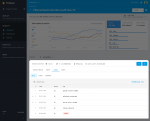RIM, currently languishing in the mobile platform race, is trying several strategies to attract developers to its BlackBerry and PlayBook platforms. It has allowed developers to port their Android applications, allows for HTML5 development, and will allow for even more native Web-based development with the release of the BBX platform later this year.
Alec Saunders, vice president of developer relations at RIM, told SD Times yesterday that it is time for developers to take a second (or third) look at the platform.
“There’s money to be made here,” Saunders said of the RIM platforms, including the BlackBerry mobile platform and the QNX-based PlayBook tablet platform. He cited an Evans Data report from September that found BlackBerry developers are making the most money.
“BlackBerry developers are not as plentiful, but 13% make over US$100,000 from the App World apps, which is considerably more than Android or Apple developers, and will help that platform continue to be compelling to developers, especially in the enterprise,” said Janel Garvin, CEO of Evans Data. Saunders said that this is due to the amount of business users on the platform, paid applications and the advertising platforms available, including BlackBerry’s own ad platform and third-party services.
BBX, announced in October at BlackBerry DevCon Americas 2011, is being touted by the company as the “next-generation” platform—a combination of the best of the QNX platform with the best of the BlackBerry mobile platform. Saunders said this platform will have a layer of application service SDKs built on top of it, and it will enable developers to build their own applications on top of that, in either HTML5, WebWorks or as native applications using the Cascade technology.
Cascade, as Saunders demonstrated on a tablet running the new operating system, allows developers to separate the logic of the application from the design. It is very similar to the Web style sheet format known as cascading style sheets, and it allows designers to have more control over the way applications are presented to the end user.
Saunders said that when BBX is available, the native applications will extend the capabilities of HTML5, and will make sure that none of the apps “break” when the official standard is announced and supported.
Additionally, he said developers now have access to using BBM (BlackBerry’s instant messenger) in their applications via BBM Connected.
There are 200 BBM Connected applications in App World, and Saunders said they account for 10% of the download traffic. These applications allow end users to share applications, discuss their recommendations for applications, and communicate inside the applications in order to create a social app experience and what he called a “viral distribution channel.”
Looking toward the future, Saunders said RIM is excited to see what types of applications developers will create, and he invited developers to jump into the app development pool, perhaps by starting out with an Android application port.
On the new platform, 70% of Android applications will be able to be used on the PlayBook. Although the experience will not be the same as a native application, Saunders said it will give developers an idea of how the App World model works.





